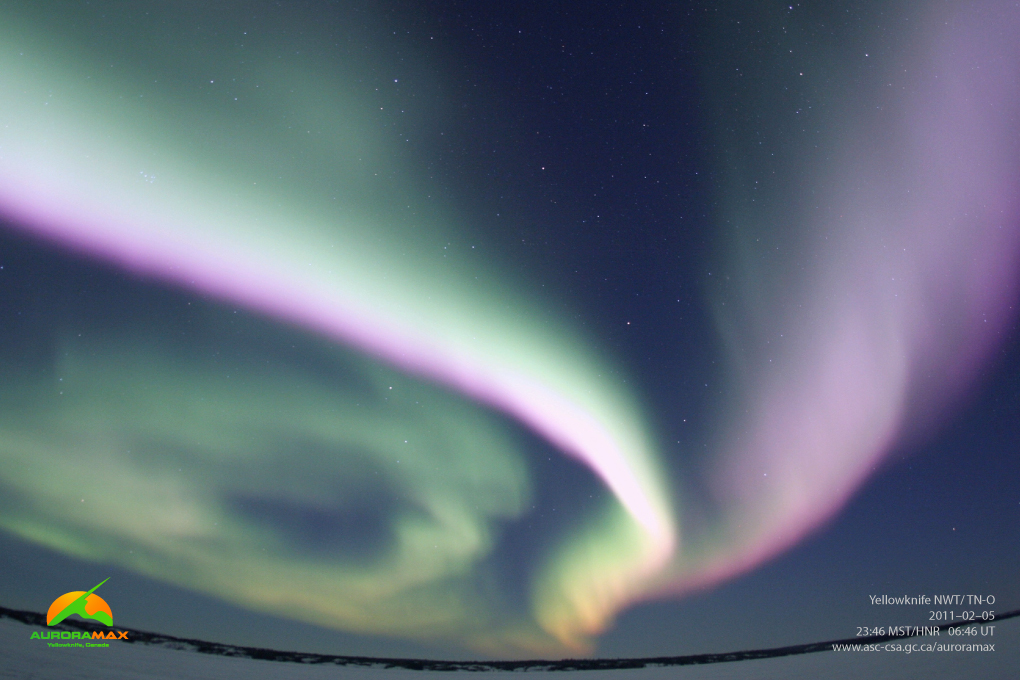The colours of the northern lights
The colours of the northern lights are determined by a number of factors:
- the composition of gases in Earth's atmosphere
- the altitude where the aurora occurs
- the density of the atmosphere
- the level of energy involved
The northern lights can be spectacular!
The northern lights most often occur at altitudes of 100 to 300 km in the atmosphere, but can sometimes occur at altitudes of up to 600 km from the ground.
The following colours can be seen when the northern lights are in the sky.
- Green: Green is the most common colour seen from the ground and is produced when charged particles collide with oxygen molecules at altitudes of 100 to 300 km.
- Pink and dark red: Occasionally, the lower edge of an aurora will have a pink or dark red fringe, which is produced by nitrogen molecules at altitudes of around 100 km.
- Red: A bit higher in the atmosphere (at altitudes of 300 to 400 km), collisions with oxygen atoms produce red auroras.
- Blue and purple: Finally, hydrogen and helium molecules can produce blue and purple auroras, but these colours tend to be difficult for our eyes to see against the night sky.
